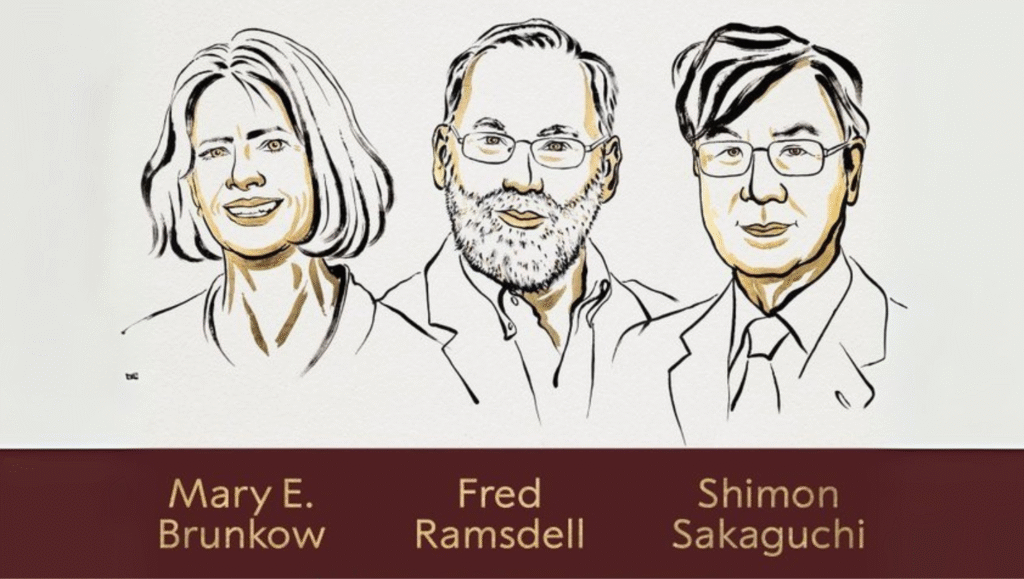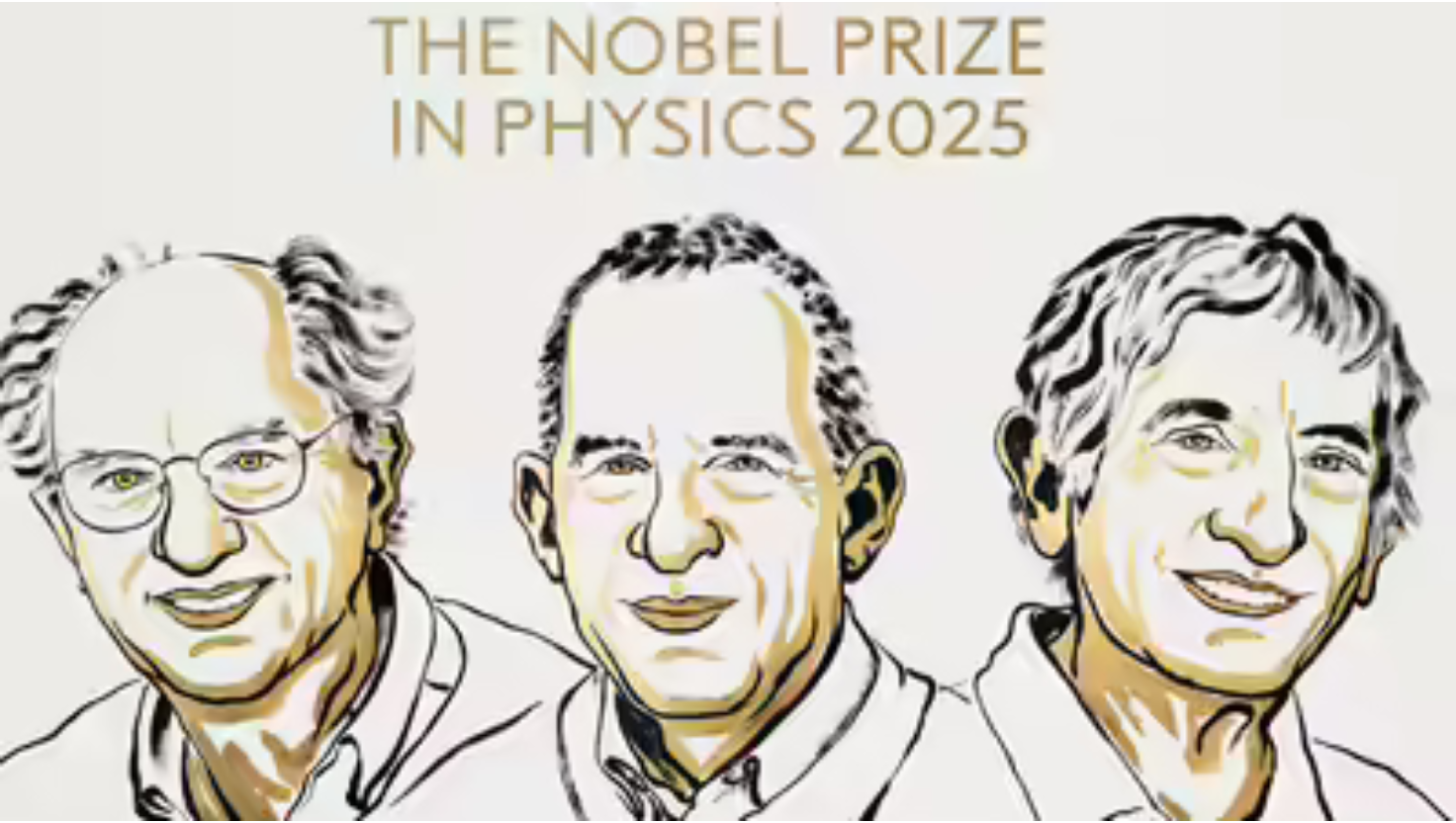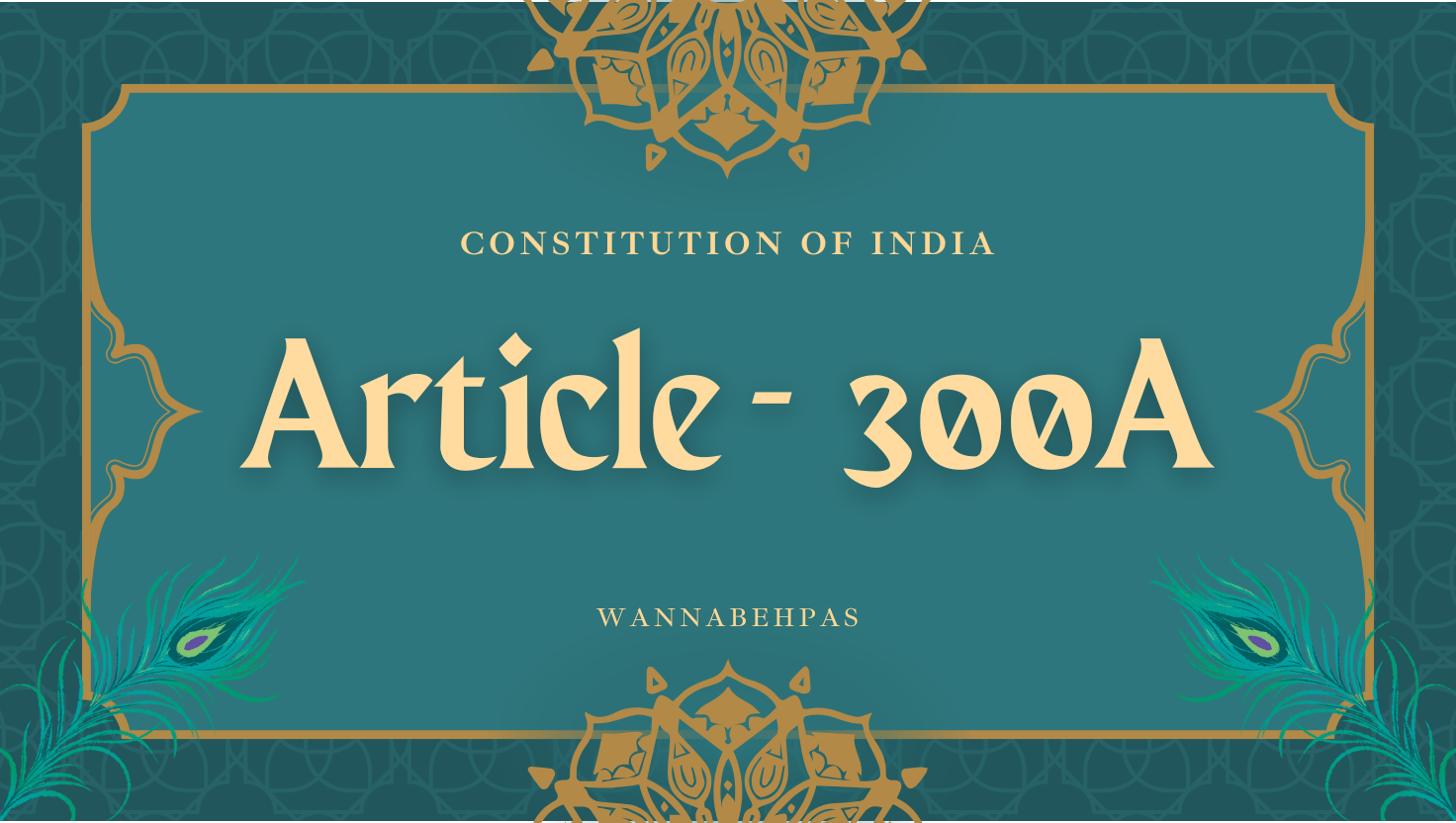Nobel Prize 2025 in Physiology or Medicine: Discoveries on Peripheral Immune Tolerance
Syllabus: Awards & Honours (UPSC Prelims)
Source: Times of India
Context
The 2025 Nobel Prize in Physiology or Medicine has been awarded to Mary E. Brunkow, Fred Ramsdell, and Shimon Sakaguchi for their groundbreaking work on peripheral immune tolerance, which prevents the immune system from attacking the body’s own organs.
Affiliations of the Laureates:
- Mary E. Brunkow: Institute for Systems Biology, Seattle, USA
- Fred Ramsdell: Sonoma Biotherapeutics, San Francisco, USA
- Shimon Sakaguchi: Osaka University, Japan
Key Discoveries
- The trio discovered the role of regulatory T cells, the immune system’s “security guards,” which keep immune responses in check.
- Their research explained how the immune system is regulated to prevent autoimmune diseases.
- Malfunctioning regulatory T cells can lead to conditions where the body attacks itself.
- This discovery laid the foundation for new approaches in autoimmune disease treatments, cancer therapy, and stem cell transplant management.
Milestones in Their Research
- Brunkow and Ramsdell gained prominence in 2001 by identifying the genetic cause behind “scurfy” mice, which were highly susceptible to autoimmune disorders.
- Their findings have spurred ongoing clinical trials evaluating potential medical treatments based on regulatory T cell modulation.
Historical Context of the Nobel Prize in Physiology or Medicine
- The prize was first awarded in 1901, making 2025 the 114th award, with over 227 individuals recognized between 1901–2023.
- Only 13 women have received the prize to date.
- Youngest recipient: Frederick G. Banting (31 years old, 1923) for the discovery of insulin.
- Oldest recipient: Peyton Rous (87 years old, 1966) for discovering tumour-inducing viruses.
Previous Laureates:
- 2024 award: Victor Ambros and Gary Ruvkun for discovering microRNA and its role in gene regulation.
About the Nobel Prize
- Alfred Nobel included Physiology/Medicine as the third category in his will due to his interest in medical research.
- The medal, designed by Erik Lindberg, depicts the Genius of Medicine holding an open book and collecting water from a rock to quench a sick girl’s thirst.
Significance
- The discovery of regulatory T cells reshaped modern immunology.
- Opens new avenues for treating autoimmune diseases and improving cancer therapies.
- Highlights the importance of immune system regulation in maintaining health and preventing serious complications.
Conclusion
The 2025 Nobel Prize recognizes the pioneering contributions of Brunkow, Ramsdell, and Sakaguchi in understanding peripheral immune tolerance. Their work continues to influence research in immunology, clinical therapies, and medical science globally.











